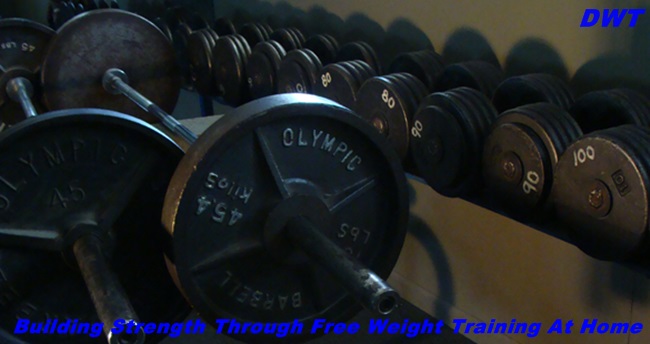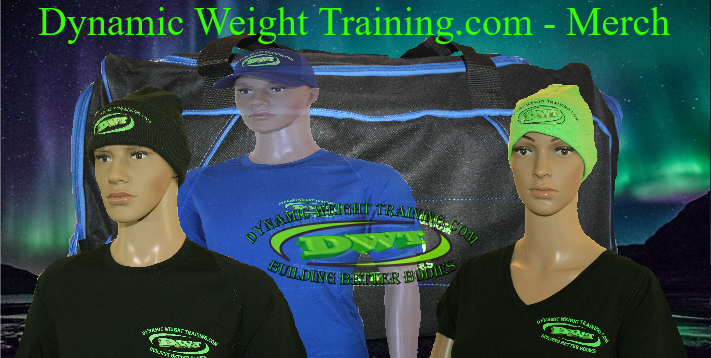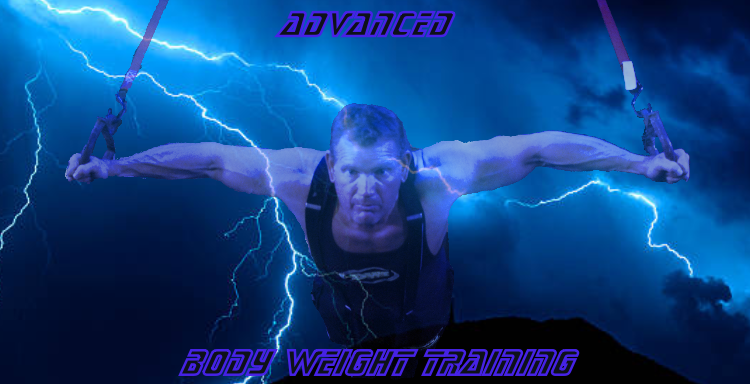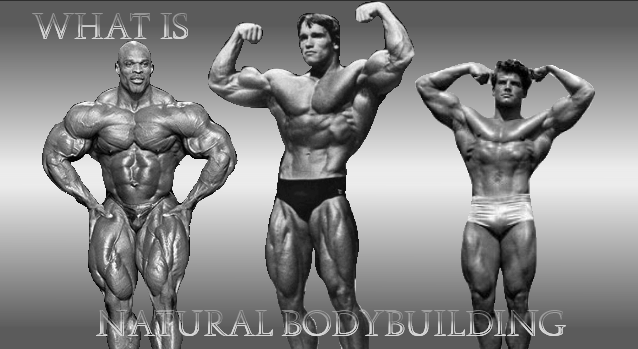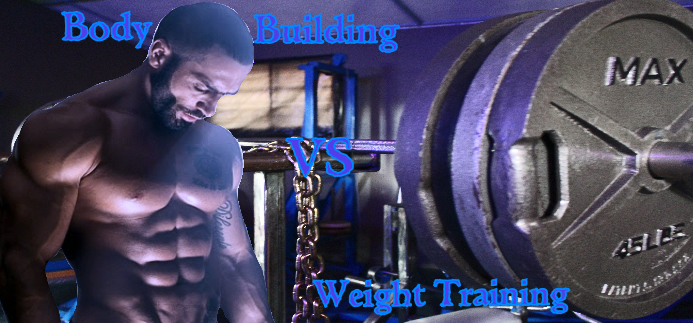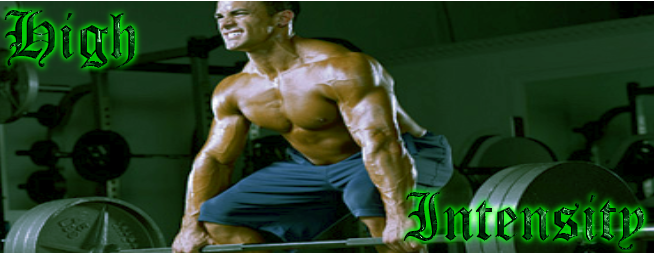Body and Free Weight Training Program
The exercises in your free weight training program that I list here should be separated into upper or lower body. I suggest at an intermediate or advanced level, this is the most effective way to strength train at home!
If you work out two days in a row taking the third day off, then repeat; this effectively gives you four workouts per week, with weekends off and three days of rest through-out the week.
Building Strength with Body Weight and Weight Training
Always be sure to warm-up those body parts or areas that you will be training that given day, if your unsure of your ability check with your health care provider before you embark on any new fitness or strength training lifestyle.
One final note on safety with regards to your free weight training program and strength training if you train at home: is, to avoid the use of collars on ‘Barbell Bench Presses’ at any angle.
Over the years there have been some disastrous consequences from people being caught with collars and bench pressing too much weight by themselves.
Please be sure to read through the entire training menu of this page to familiarize yourself with exercise performance. Towards the bottom of the exercise menu we'll go into set and rep ranges including intensity and rest intervals aimed at your level of lifting.
Body and free weight training program exercises for upper body
Starting on
Monday:
Warm-up: Some light Cardio or core training - 10-12 minutes
Medium grip flat bench barbell presses:
Stimulates: Chest, shoulders, and triceps: removing the resistance from the bench stirrups, lower to touch the mid chest, pushing through the chest back to the start, keeping the movement smooth and fluid while controlling exercise resistance.
Note: you can alternate with incline barbell bench press or you may also use dumbbells as a secondary movement in your free weight training program.
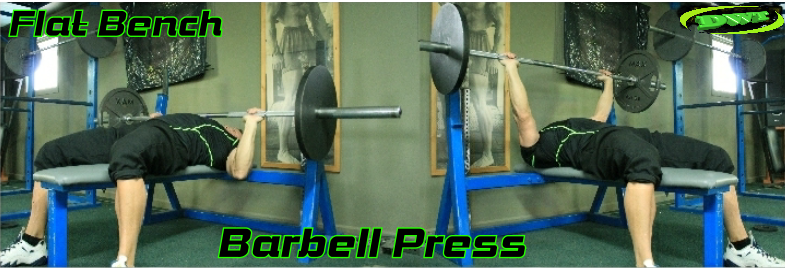
Clean and press:
Stimulates: upper chest, shoulders, triceps and trapezius muscles: this exercise is preformed where you have an overhand slightly wider than shoulder width grip on the barbell.
Starting with a shoulder width grip, lift the bar and rotate the wrists, once you’ve pulled the bar up to your shoulders, then press skyward; once you’ve achieved this, return the bar back to its starting position from the shoulders to your waist and repeat.
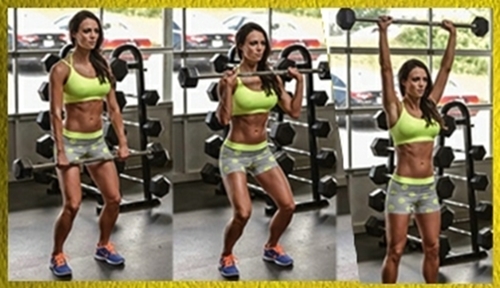
Parallel bar dips:
Stimulates:
Chest, shoulders, and triceps: if you have one? Lean forward
slightly to engage the lower chest muscles and shoulders. Or hold yourself
straight up-and-down and lower yourself until you feel the stretch, which will engage the triceps more intensely at this point. This is a very engaging exercise and a good upper body strength builder to include in any free weight training program.
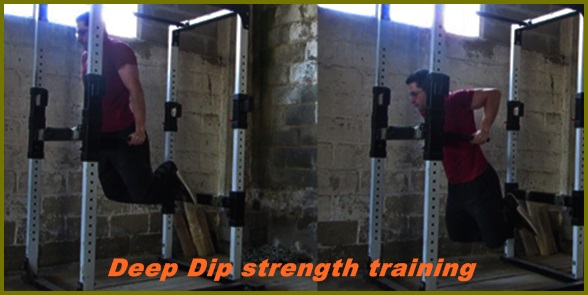
Bent over barbell or dumbbell rows:
Stimulates: Upper and lower back, biceps and shoulders: grip the barbell in an overhand fashion. Have your feet positioned approximately 10 inches apart at this point; bring the bar up straight, to touch the upper abdomen, pulling the shoulders back for a full stretch. This exercise can be performed the same with dumbbells.
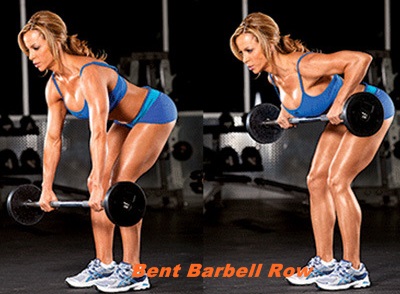
Squat thrust and press:
Stimulates: Quadriceps, hamstrings, lower back, shoulders, chest and triceps.
Starting with feet facing straight ahead 10 to 12 inches apart, have the bar resting on the front shoulders, as if performing the front squat as demonstrated. Begin pushing yourself steadily and evenly out of the squatting position to a full standing position, then; drive the barbell skyward as if you were preforming a military press, return to starting position.
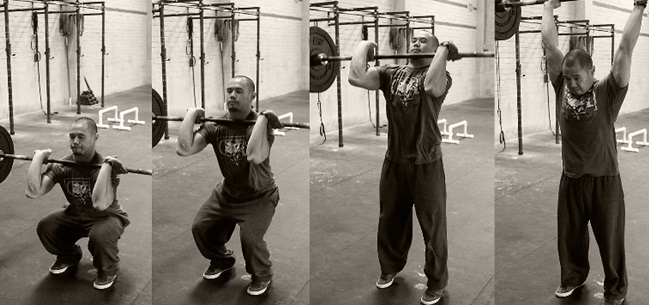
Standing straight upright rows:
Stimulates: Shoulders, back, biceps and trapezius: the barbell should be brought to your neck, incorporating an overhand grip 6 to 8 inches apart. You can also use dumbbells as a secondary exercise.
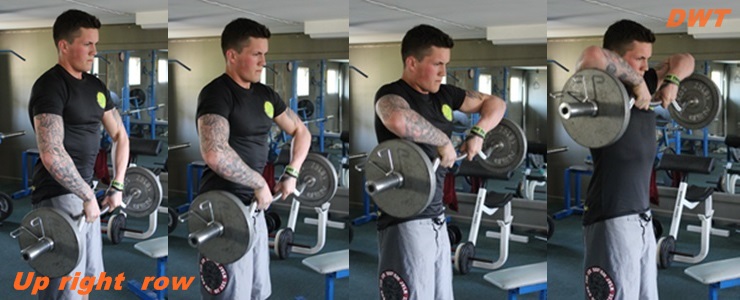
Body weight exercises for upper body:
Body weight exercises for a beginner or advanced athlete can be highly beneficial, preformed at home or on a limited budget, their challenging and work well for increasing strength in conjunction with free weight training.
Push-ups:
Stimulates: Chest, shoulders, triceps: with hands out past shoulder width to stress the chest, or bring your hands in closer together to force the shoulders and triceps to work more, drive through the palms and squeeze the chest at the top. If you want to increase intensity: elevate feet up on a chair.
Dumbbell push-ups are shown here only as a variation for you, to provide a deeper stretch engaging more fibril strength.

Chair dips with body weight:
Stimulates: chest, shoulders and triceps: hands resting on a chair or bench shoulder width apart, preferably with your feet up on another chair, you can add a dumbbell or plate weight to your thighs for added resistance as you feel you need.
Note: as you begin to lower yourself, allow the lower back to barely clear the bench, this helps to keep the shoulders and energy aligned properly keeping the shoulders from overextending. Only allow the heels to rest on the bench or chair in front of you, the ankles act as a natural hinge and make the exercise easier to complete.

Over-hand wide grip chins
Stimulates: Shoulders, back, biceps and trapezius: position one hand width past the shoulders bringing your chin to the top of the bar with each repetition. These may be difficult to start with if you’re not used to them: if you’re not, try doing body weight-based chin-ups or pull-ups with hands facing toward you, 8 to 10 inches apart, this will help assist chinning strength.
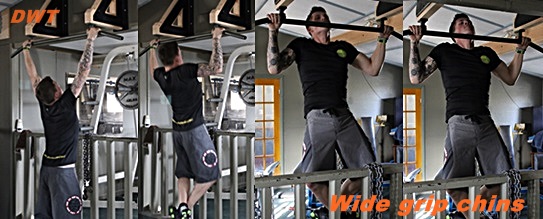
Floor Pull-ups:
Stimulates: Shoulders back biceps, trapezius: performed with an empty barbell or piece of metal pipe or heavy wooden dowelling hooked on or secured to a solid surface 3 to 5 feet apart, 36 inches off the ground.
You can perform these with an overhand or underhand grip, the (over hand is shown here) - underhand allows you to work the biceps more intensely.
Lying on your back reaching up from the floor and grabbing the bar that is located at head or neck level above you; begin pulling yourself up to neck or chest level, then lower yourself back in a controlled manner.
Note: make sure the Bar is located so that your arms are at a full stretch when your lying flat increasing a full range of motion through-out this exercise.

Body weight exercises are a great way to build real world strength and muscle symmetry, for beginners or advanced ; body weight training offers endless verity and great athletic challenges.
Day Two Of Your Free Weight Training Program
Tuesday: strength training at home
Free Weight training exercises for lower body;
Again, before you actually begin training at home.
Be sure to warm-up the legs lower back and shoulders well before starting, include some light cardio or core training for 8 - 10 minutes before starting any free weight training program!
Arguably one of the best free weight training exercises for the bodies over-all muscle structure, particularly for the lower body; is that of the squat.
Note: as a rule of thumb always try to train the bigger, more powerful muscle groups first. The front quads are among the strongest of the muscle groups in the entire body; baring calf training, so train these first if you can, while your strength curve is fresh.
Barbell squat:
Stimulates: the muscles of the quadriceps, hamstrings, calves, shoulders, upper back including the stabilizer muscles of the lower back and spine.
You can perform these in two ways with the barbell: with a wider than shoulder width grip, bar resting on the back of the shoulder muscles against the trapezius.
Lower yourself to the point where the hamstrings/rear leg biceps are parallel with the floor. Always pair resistance to your lifting level in your free weight training program.
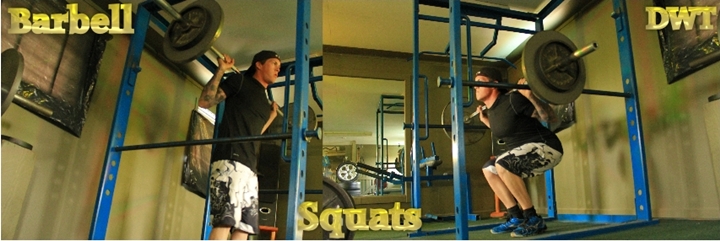
If you're using dumbbells: lower yourself until the leg biceps are parallel to the floor holding the dumbbells, palms facing toward you, head and shoulders should be pulled back to help you maintain balance and form for each repetition. Feet should be 10 to 12 inches apart.
Note: some people need to put a small five or 10 pound half inch plate under their heels to perform these properly, experiment to see which is most comfortable for you in terms of balance.
Front barbell squats:
Stimulates front quadriceps, hamstrings, calves, shoulders and lower back have the barbell sitting across the upper chest in front on the shoulders, some/most people find it most comfortable to cross their arms and hold the bar securely to keep the bar from moving or sliding.
Keep your head/chin up, lowering yourself in the same manner as the regular squat, again; adjust the weight to satisfy intensity levels.
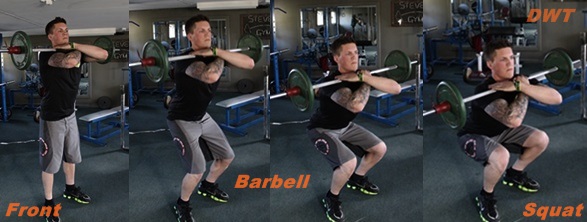
Dead lifting:
Stimulates: Upper and lower back, biceps, glutes and hamstrings of the upper legs: is most often performed with the barbell, hands slightly wider than shoulder width apart with a reverse grip, meaning: the left-hand has an underhand grip while the right has an overhand.
Grip the bar on the floor as mentioned above, feet 10 to 12 inches apart, shoulders pulled back, looking straight ahead...
pull the bar allowing it to just clear the knees, as you begin to stand-drive through your heels to complete a standing position; re-lower the bar and finish the set in the same manner. This is another great over-all strength exercise that can be preformed at home.

Straight or stiff-legged dead-lifting:
Stimulates: Upper and lower back and rear leg biceps of the upper legs: Stiff-legged dead-lifting is performed in the same manner as above; you don’t bend your knees you keep them straight keeping the emphasis on the backs of the upper legs.
I always like to
perform this exercise with the barbell first, then graduate towards the dumbbells as I begin to tire. I have shown the barbell here but, the dumbbell version is preformed in much the same way in your free weight training program.
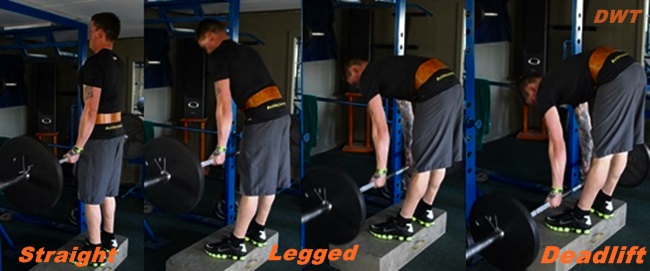
Standing calf raises:
Stimulates: muscles of the calves, rear leg biceps and overall postural strength:
These can be performed with different forms of resistance. If you want you can use a barbell across your shoulders or dumbbells, you can also do both legs at the same time or alternate from one leg to the other.
Use a board 2 to 3 inches in height and approx. 2 feet long. This can actually be anything, as long as it's solid and won’t tip on you when you put your toes out towards the edge.
The board simply allows you to get a deeper degree of stretch, therefore building greater strength and endurance into the calf by stretching further in the bottom of the exercise.
Note: If you’re not used to this exercise, practice doing them at home without any free weight/resistance - with your hands resting against the wall or against something solid to keep you steady, until you build coordination and balance into the exercise.
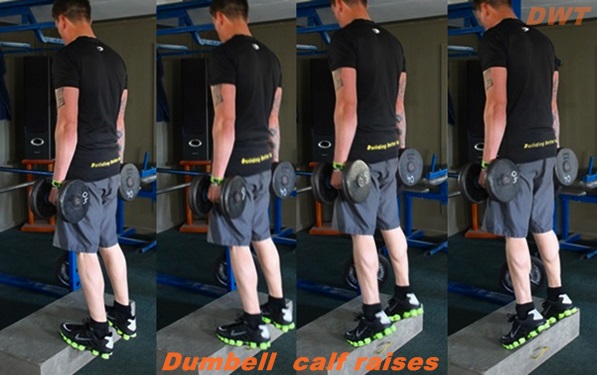
Lunges:
Stimulates: quadriceps, rear leg biceps, glutes, hamstrings, shoulders and lower back
You can perform lunges either with the barbell across the back of your neck as you would in the squat, or preformed with dumbbells/kettle bells. From a standing position, step out with your right leg with a generous step, lowering until you feel the stretch in the quads, hamstrings and glutes...
Push back with the leading leg returning to the starting position; you can perform each set one leg at a time or finish all 8 to 10 reps on one leg before moving to the other.
Note: if you’re not conditioned to lunges, these really stimulate in any free weight training program.
Their great for building strength and muscle shape, especially in areas of the legs that don’t normally get used a lot in everyday tasks, soreness from the last day’s efforts can be uncomfortable, if you over-do it.
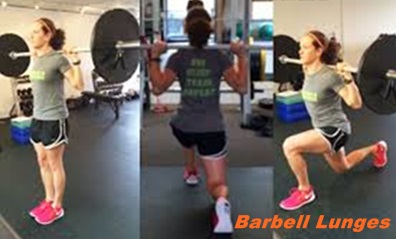
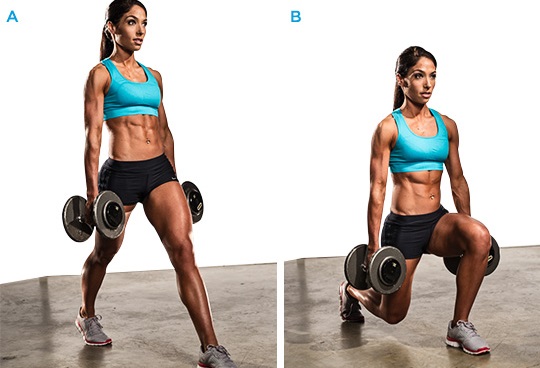
Body weight exercises for the legs:
You can use body weight-based exercises for the legs, stimulation may not as progressive as the legs are extremely powerful muscles used to packing the entire body each and every day.
Having and using a free weight training program to build strength into them is almost essential. If you possibly can; add resistance as much as you can comfortably handle to build strength and endurance into all areas of your legs.
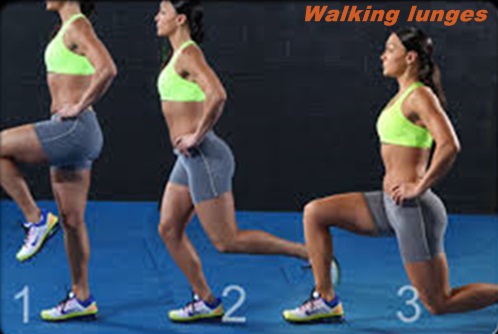
The only body weight-based exercises I personally perform for legs in my own gym is the walking lunge with hands on the hips, or dumbbells.
I often perform giant lunges between heavy sets of squats or leg presses, making each stride slightly longer to really feel the stretch in the bottom end of each lunge...
This really stimulates the strength and endurance of the upper legs.
Set And Rep Ranges For Strength Training?
I have no way of knowing what your strength training goals are or what your physical age, gender or conditioning level is for that matter...
if you are a beginner to early intermediate you can focus on 8 to 10 reps of each exercise bringing you closer to the failure point - you adjust the weight as you feel you need to reach this point of stimulus.
With regards to how many sets you should be performing this is not bodybuilding so volume training is not important. If you’re just starting out, as a beginner, I would probably pick 2 exercises each training day and perform approximately 3 sets of each...
giving your body time to see how everything is reacting to strength training.
If your conditioning level is more advanced, I might recommend choosing three exercises from your free weight training program, performing three sets of each exercise, aiming for 6 to 8 reps, ultimately challenging yourself with each repetition of each exercise, you choose.
Note: Low rep training is for building strength, higher rep ranges specifically activate endurance-based muscle fibre.
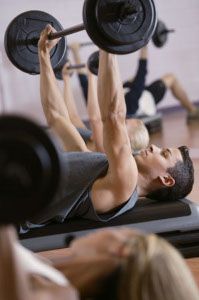
It isn’t about how many sets you perform; it’s what you’re doing within each set. To be dynamic in your strength training efforts means:
bringing a lot of creative, energetic - intensity to your strength training.
You can also alternate this set and rep intensity intermittently. E.g., choose a week when you’re feeling strong, every couple of weeks/once or twice a month-by adding another couple of sets or lift slightly heavier.
You can also add to your intensity in your free weight training program by lowering your rep range in the neighborhood of 3 to 5 reps, getting closer to your one rep max using a cycling method to avoid injuries allowing the muscles decent recuperation time.
The last set range should only be performed in this range as your strength curve allows.
Rest duration between sets:
This of course vary's with present conditioning and training intensity levels. You should be somewhere in or around the two-minute rest range interval, if you find you can return to the next set In one minute or less-
then intensity may not be where it should be; huffing and puffing in any free weight training program is normal. Regardless; be sure that your body has made a 85-90% recovery aerobically before taking on the next set; this is about building strength not endurance.
Concluding:
I Hope the free weight training program has helped to get you started or motivated
to train at home, or anywhere for that matter. Use and
reuse the ideas, information and free weight training program I have set up. Don’t be afraid to experiment, be creative with the exercises, including your diet and enjoy your new life style.
Go for your strength and conditioning goals and don’t let others tell you can’t do this… because you can! Follow your hearts hopes and dreams of building a better body because that's whats going to take you there!
DWT
